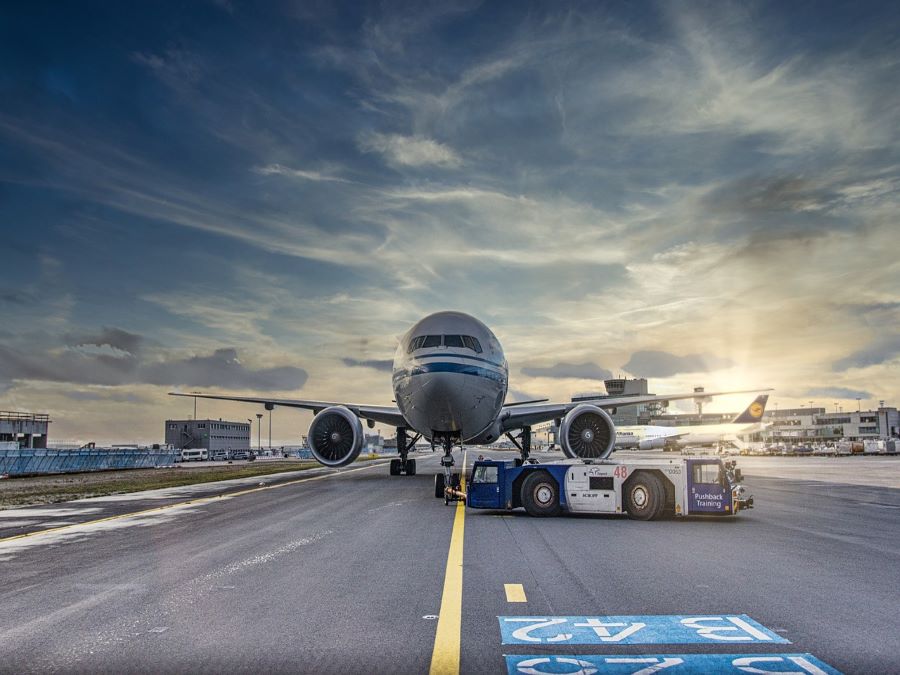
UK-based CAV Systems, previously known as TKS (Aircraft De-icing), develops technology relating to aircraft ice protection and drag reduction, as well as other safety and efficiency applications. According to IMARC Group, the global aircraft de-icing market is expected to grow at a compound annual growth rate of 5% during 2021-2026, reaching $1.6bn in 2027.
TKS’ system protects the leading edges of an aircraft, as well as its windshields and propellers, dispersing an ambient temperature freezing point depressant fluid from microscopic holes in laser-drilled titanium panels. The TKS fluid consists of ethylene glycol, isopropyl alcohol and pure water.

Discover B2B Marketing That Performs
Combine business intelligence and editorial excellence to reach engaged professionals across 36 leading media platforms.
The freezing point of the moisture is controlled throughout the flight. Accuracy is key as the flow rate is calculated for each individual aircraft.
Mitigating the dangers of ice
“Ice build-up represents one of the most prominent dangers when flying in cold weather or at certain altitudes,” says CAV Systems CEO Mike Eggleston. “This is because it can actively disrupt your airflow, decreasing both the performance and control of an aircraft as well as reducing visibility, ice can increase the weight and drag. Not only that, but it can increase the risk of stalling at a lower angle of attack and at a higher airspeed.
“TKS is a high-performing anti-ice and de-ice protection system installed to keep your aircraft safe when in icing conditions. TKS can be designed for either inadvertent encounters (no hazard) or ‘Flight into Known Icing’ conditions, keeping you safe whatever the conditions.”
Eggleston also distinguishes between anti-ice and de-icing functions. De-icing systems are a thick rubber material which inflates and expands to crack ice, removing ice that has already formed whereas TKS provides de-icing and anti-icing which will help the aircraft avoid any ice forming as well.

US Tariffs are shifting - will you react or anticipate?
Don’t let policy changes catch you off guard. Stay proactive with real-time data and expert analysis.
By GlobalDataA challenge created by traditional de-icing systems is that if the boots inflate prematurely, there could be an increase in the area that the ice covers; while inflating them too late may not create the force needed to break the ice. Another benefit of TKS systems as opposed to traditional systems is that they do not impact aircraft drag, range, or efficiency.
In addition, TKS protects the entire aerofoil which safeguards aerodynamics and performance, unlike the use of boots wherein ice behind the boots will not be removed.
Considering weight and energy
Pilots are wary of additional weight, and CAV has ensured that the quantities of fluid used are low. The system only needs to be filled once or twice in the winter season.
“One common misconception about TKS systems is the additional weight that they supposedly bring as a liquid-based system. De-ice systems may appear to be lower-weight, but they come with a significant range of penalties,” says Eggleston.
“The integration of the TKS Titanium panels into the leading edge can remove alternative or existing structural weight, with the significant additional benefit that the aircraft will not be inhibited by inter-cycle ice shapes, which add weight and drag.”
TKS also has the lowest energy consumption, at 42W, while de-ice boots tend to need around 775W. The 733W difference will ensure that TKS appeals to many in the current market.
Electro-thermal ice protection systems that heat the leading edge at regular intervals require tens of kW of energy, which also demonstrates the energy efficiency of TKS.
CAV Systems are also developing lighter-weight components, reduction in TKS fluid requirements for shorter journeys and the hybridisation of TKS with electric anti-icing. This will strengthen the case for the use of TKS in electric and hydrogen-powered aircraft.





